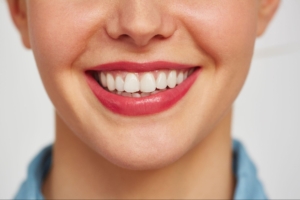
Composite bonding has become a go-to cosmetic dental solution for individuals looking to enhance their smile without undergoing invasive procedures. At Manor House Dental, based in Birmingham, we frequently treat patients who later return with one key question:
“Is it possible to go back to my natural teeth after composite bonding?”
In this article, we’ll explore this topic in-depth—covering how composite bonding works, what happens to the underlying natural teeth and what you should know before considering a reversal.
Book Your Consultation Today
What Is Composite Bonding and Why Is It Popular?
Composite bonding (also known as cosmetic bonding or dental bonding) is a non-invasive cosmetic dental treatment where a tooth-coloured resin is applied to the teeth to improve their appearance. It can be used to:
-
-
- Correct chipped or cracked teeth
- Fill gaps between teeth
- Improve the appearance of discoloured teeth
- Reshape or lengthen short or uneven teeth
- Replace old metal fillings with tooth-coloured material
-
One of the major appeals of composite bonding is that it preserves most of your natural tooth structure, unlike treatments such as crowns or veneers which often involve drilling or enamel removal.
At Manor House Dental, we offer composite bonding in Birmingham using high-quality materials, designed to blend seamlessly with your natural teeth.
Is Composite Bonding Permanent?
 No. Composite bonding is a semi-permanent treatment, typically lasting between 3 to 7 years, depending on the individual’s oral hygiene, lifestyle habits (such as smoking or drinking staining beverages) and bite pattern. Over time, the resin may chip, stain, or wear down.
No. Composite bonding is a semi-permanent treatment, typically lasting between 3 to 7 years, depending on the individual’s oral hygiene, lifestyle habits (such as smoking or drinking staining beverages) and bite pattern. Over time, the resin may chip, stain, or wear down.
Since it is reversible, patients often ask whether their natural teeth will look the same if they decide to remove the bonding.
Can Composite Bonding Be Removed?
Yes, composite bonding can be removed. Dentists use a process called “composite removal”, which involves carefully polishing away the bonded resin material without harming the underlying tooth.
The removal process includes:
-
- Assessment – The dentist evaluates the thickness, location and condition of the bonded material.
- Polishing – Special rotary tools or fine abrasive discs are used to gently buff off the composite.
- Finishing – The tooth is smoothed and polished to restore its appearance as closely as possible to the original enamel surface.
However, while this process is safe, it requires precision and should only be carried out by a qualified and experienced dentist.
Learn More About Composite Bonding
Will Your Teeth Look the Same After Bonding Is Removed?
In most cases, your natural teeth can be restored to a near-original appearance, but there are important caveats to consider.
Factors That Influence the Final Result:
-
- Tooth Preparation (if any):
In many bonding cases, especially those performed by experienced clinicians, no enamel is removed during initial application. However, some minor abrasion or roughening may have been necessary to help the resin adhere. - Surface Texture Changes:
After removal, the enamel may feel slightly rougher than before. This can usually be polished smooth, but minor texture differences can remain. - Colour Discrepancy:
Teeth may appear slightly different in colour due to natural staining over time or discolouration under the bonding. This is more noticeable if bonding was used to mask severe staining. - Minor Enamel Wear:
Although bonding is typically non-invasive, a small amount of enamel may have been reshaped—especially if the tooth was uneven or had chips prior to treatment. This enamel is not regenerable and as such, the tooth might not be exactly the same.
- Tooth Preparation (if any):
Is Composite Bonding Truly Reversible?
Yes—but with realistic expectations.
Composite bonding is technically reversible, meaning the resin can be removed and the teeth can be restored to a natural appearance. However, it is important to consider that:
-
-
- There may be cosmetic differences, such as surface finish and colour.
- Any pre-treatment modifications (such as enamel smoothing) cannot be undone.
- Tooth whitening may be required to even out tone or brightness after removal.
-
This is why at Manor House Dental, we strongly recommend that patients understand the long-term implications of any cosmetic dental procedure—even minimally invasive ones like bonding.
What Should You Do After Removing Composite Bonding?
If you opt to have your bonding removed, follow-up care is essential to ensure your natural teeth remain healthy and aesthetically pleasing.
Recommended Steps After Bonding Removal:
-
- Professional polishing: Helps restore smoothness and shine to the enamel surface.
- Teeth whitening: May be suggested if there’s a noticeable difference in shade between previously bonded and unbonded teeth.
- Fluoride treatments: Strengthen enamel and reduce sensitivity post-removal.
- Ongoing hygiene maintenance: Brushing twice daily, flossing and regular check-ups are key.
When Should You Consider Removing Composite Bonding?
 You may want to reverse composite bonding if:
You may want to reverse composite bonding if:
-
-
- The bonding has chipped or discoloured
- You’re considering an alternative cosmetic treatment (e.g., porcelain veneers)
- You are dissatisfied with the aesthetic results
- There are bite alignment or speech issues post-treatment
-
Before taking action, it is essential to have a consultation with an experienced cosmetic dentist to evaluate the current state of your bonding and natural teeth.
Why Choose Manor House Dental?
Manor House Dental in Birmingham provides expert cosmetic and restorative dentistry with a patient-first ethos. Our highly experienced team is known for:
-
-
- Minimally invasive cosmetic procedures
- Precision and safety in composite removal
- Honest, tailored advice for long-term dental health
- Transparent communication and ethical recommendations
-
Whether you’re considering composite bonding for the first time or looking to reverse a previous treatment, our team is here to support you every step of the way.
Summary: Can You Return to Natural Teeth After Composite Bonding?
Yes, you can return to your natural teeth after composite bonding in most cases.
The resin can be removed by a professional with minimal to no damage to the tooth, especially if applied conservatively. However, some subtle changes in texture, enamel, or colour may be present and patients should be fully informed before deciding to proceed with removal.
Book Your Consultation at Manor House Dental
If you’re considering composite bonding, or wish to remove or revise existing treatment, we invite you to book a consultation at Manor House Dental, Birmingham. Our experienced cosmetic team will provide a comprehensive assessment and explain your options clearly, so you can make an informed decision.
To book, contact us via our website or call us directly. We’re here to help you smile with confidence—whether it’s your natural teeth or a beautifully enhanced version.
